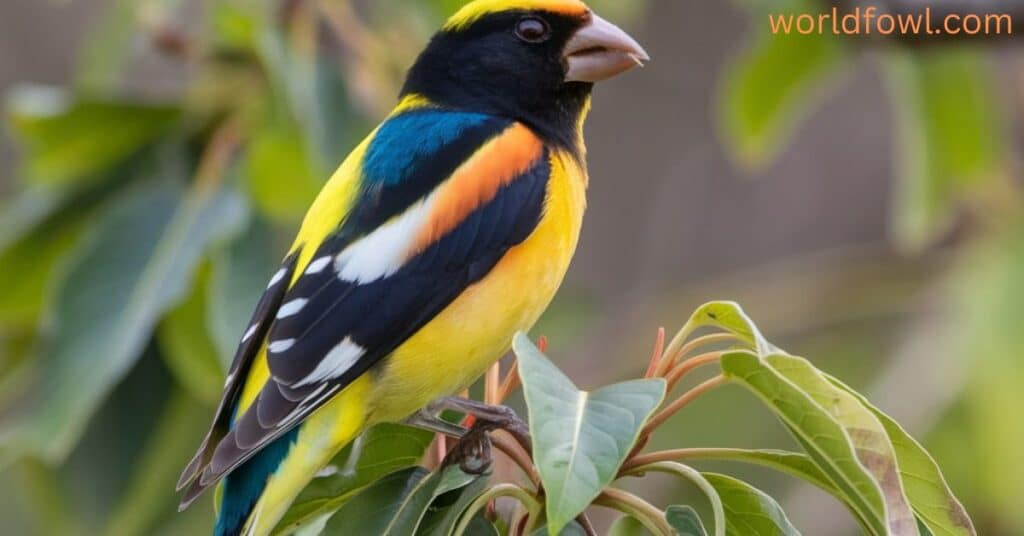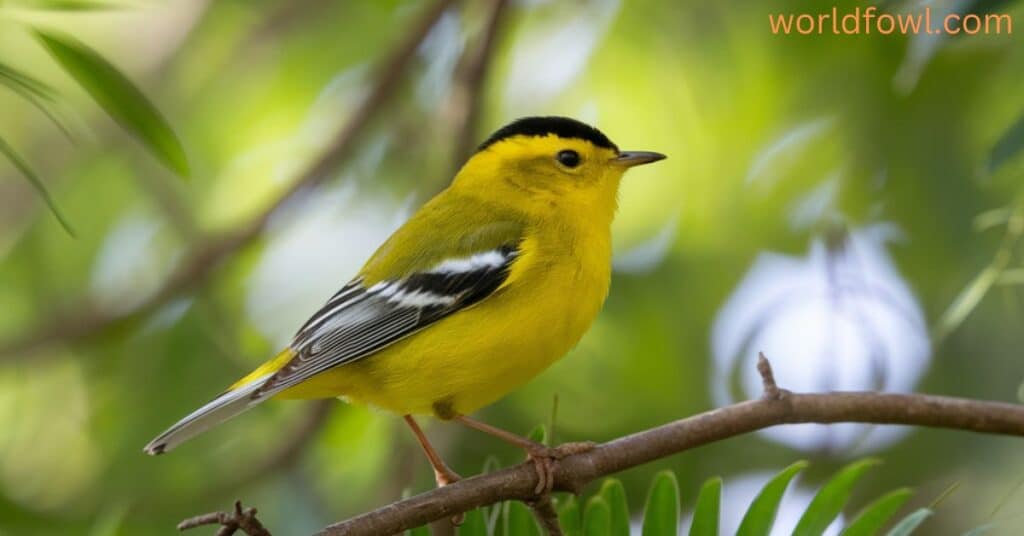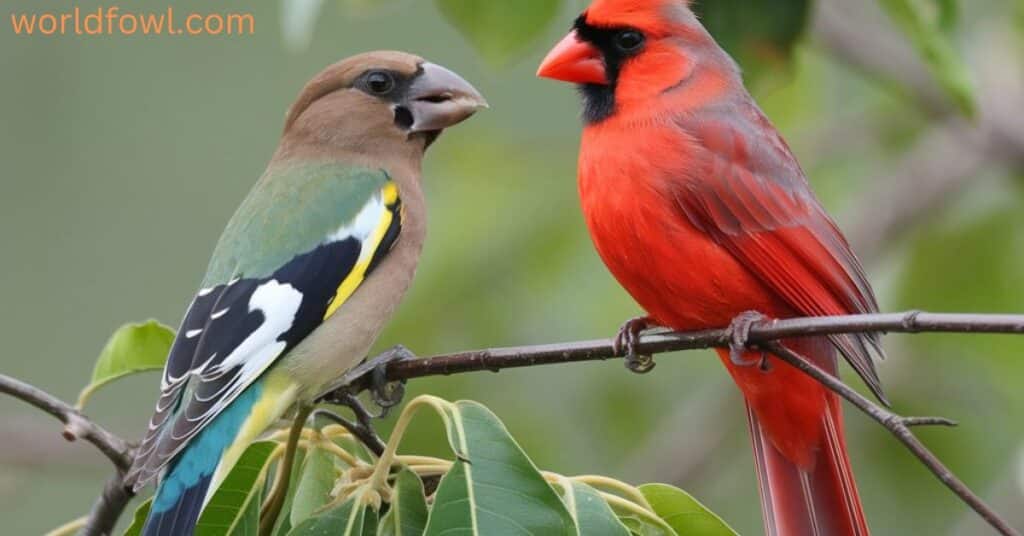Georgia’s rich ecological tapestry offers birdwatchers a remarkable opportunity to observe a diverse range of avian species, particularly the captivating yellow birds that grace its landscapes. From the cheerful American Goldfinch to the melodious Common Yellowthroat, these vibrant feathered creatures not only add splashes of color to Georgia’s scenery but also play significant roles in the ecosystem. This comprehensive guide delves into the various species of yellow birds in Georgia, providing detailed insights into their identification, behaviors, habitats, and optimal viewing locations.
Introduction

With its unique blend of forests, swamps, open areas, and urban parks, Georgia serves as a crucial habitat for many bird species, including a variety of yellow birds. These birds are particularly interesting to birdwatchers due to their striking colors and diverse behaviors. Understanding their characteristics, breeding and migration patterns, and preferred habitats can enhance your birdwatching experience and deepen your appreciation for Georgia’s avifauna.
In this guide, we’ll explore key families of yellow birds: vireos, finches, blackbirds, warblers, and cardinals and grosbeaks. Each section will provide comprehensive information about individual species, focusing on their identification, habitats, songs, and the best locations for observation. By the end, you’ll have a deeper understanding of these enchanting birds and the best practices for spotting them in the wild.
you may also like : 24 Yellow Birds In Ohio With Photos
Vireos in Georgia

Vireos are small to medium-sized birds that exhibit subtle yet beautiful coloration and are renowned for their melodious songs. In Georgia, the Philadelphia Vireo and the Yellow-throated Vireo stand out among the vireo species, offering distinct traits and behaviors.
Overview of Vireo Species in Georgia
Vireos thrive in various habitats, particularly deciduous forests and woodlands. They favor dense foliage that provides ample cover and food sources, allowing them to forage for insects and berries. Their songs are typically clear and melodic, making them easier to locate by ear.
Philadelphia Vireo

The Philadelphia Vireo is a small bird . These birds are most prevalent during migration, making spring and fall the optimal seasons for spotting them in Georgia. Their song resembles a series of soft, high-pitched notes that are pleasant to hear, especially in the quiet of early morning. They often inhabit dense canopies in mixed forests, so look for them in areas with thick foliage.
Yellow-throated Vireo

Distinguished by its striking yellow throat and gray back, the Yellow-throated Vireo is more robust than many of its relatives. This species favors swamps and woodlands, where it can often be observed foraging for insects among the branches. Their songs are melodious and consist of distinct phrases that make them easier to identify. During the breeding season, they become more vocal and active, providing birders with increased opportunities for observation.
you may also like : Magnolia Warbler (Setophaga magnolia)
Finches in Georgia

Finches are small birds with strong, conical bills that make them adept at seed eating. In Georgia, two finch species stand out for their vibrant yellow plumage: the American Goldfinch and the Evening Grosbeak.
General Finch Characteristics
Finches are highly social birds, often seen in flocks, particularly outside of the breeding season. They are adaptable and can thrive in various environments, including open areas, gardens, and parks. Bird feeders stocked with sunflower seeds or thistle can attract these cheerful visitors, making backyard observation both enjoyable and accessible.
American Goldfinch

The American Goldfinch is arguably the most recognizable yellow bird in North America. Males exhibit bright yellow plumage with distinctive black wings during the breeding season, while females sport a more muted yellow-brown coloration. These birds primarily feed on seeds from a variety of plants, including dandelions and thistles, which makes them a common sight in gardens and fields during the summer months. Observing their acrobatic feeding behaviors as they cling to seed heads is a delightful experience for birdwatchers.
Evening Grosbeak

The Evening Grosbeak is a striking finch that, while less common than the goldfinch, is notable for its bright yellow and black plumage. These birds typically visit feeders in the winter months, especially in areas abundant with pine trees. The sight of a flock of Evening Grosbeaks at a feeder is a special treat for birdwatchers, as their striking colors and social behavior create a lively spectacle.
you may also like : What Color Are Flamingos When They Are Born? A Full Guide
Blackbirds in Georgia

Blackbirds are often overlooked, yet many species feature beautiful yellow markings and play crucial roles in the ecosystem. They are known for their intelligence and adaptability, thriving in diverse habitats.
Blackbird Group Overview
The blackbird family encompasses a variety of species that can be found in habitats ranging from forests and swamps to open fields and wetlands. Their calls can vary significantly, with some species producing melodious tunes while others emit harsh squawks. Blackbirds often forage in flocks, particularly in agricultural fields and wetlands, where they feed on seeds, insects, and fruits.
Eastern Meadowlark

The Eastern Meadowlark is a medium-sized bird easily recognized by its distinctive yellow belly and melodious song. They prefer open fields and pastures, where they can often be seen perched on fence posts or foraging in the grass. Their beautiful, flute-like song is a highlight of spring mornings in Georgia, making them a favorite among birders. Meadowlarks typically nest on the ground, and their presence is a strong indicator of healthy grassland habitats.
you may also like : The Thick-billed Parrot: A Comprehensive Analysis
Warblers: The Largest Group of Yellow Birds in Georgia
Warblers are among the most colorful and diverse groups of birds in North America, and Georgia is an essential stopover for many migratory species. Their migration patterns, combined with stunning plumage, make them particularly sought after by birdwatchers.
Blue-winged Warbler

With its striking blue wings and bright yellow underparts, the Blue-winged Warbler is a visual delight for birdwatchers. They thrive in shrubby areas and open woods, often singing from low branches.
Canada Warbler

The Canada Warbler features a bright yellow belly adorned with dark streaks, making it an attractive sight. These warblers prefer dense undergrowth in forests, often near water sources.
Common Yellowthroat

Easily recognized by its black mask and yellow underparts, the Common Yellowthroat inhabits marshes and wetlands across Georgia. Their cheerful “wichity-wichity-wichity” song rings through the underbrush, making them easier to locate.
Magnolia Warbler

This warbler features a unique streaked pattern and bright yellow underparts. The Magnolia Warbler prefers deciduous forests during migration, where it feeds on insects among the foliage. Their distinctive song consists of short, rapid notes that can help birders locate them during their fleeting appearances in Georgia.
Pine Warbler

The Pine Warbler is often found in pine trees, where it feeds on insects and seeds. They exhibit a soft yellow hue and are known for their melodic song, which consists of sweet phrases that resonate through the pines. These warblers are year-round residents in Georgia, making them a reliable sight for birdwatchers.
Wilson’s Warbler

This small warbler features a vibrant yellow body with a distinctive black cap. Wilson’s Warbler often inhabits shrubby areas and wetland edges, where it forages for insects. Their sweet, high-pitched song is a highlight for birders, especially during the migration season when they pass through Georgia.
Yellow Warbler

The Yellow Warbler is easily recognized by its bright yellow plumage and sweet, trilling song. Their distinctive song, a series of “sweet-sweet-sweet, I’m so sweet,” makes them a joy to encounter in the wild.
you might also like : Why Do Storks Kill Their Young – Deadly Stork Secrets
Cardinals and Grosbeaks

The cardinal and grosbeak families include some of the most recognizable and colorful birds in North America. In Georgia, the Dickcissel represents a unique member of this group, showcasing striking yellow and black plumage.
General Characteristics
Cardinals and grosbeaks are known for their robust bodies and strong, conical bills, ideal for cracking seeds and berries. Their bright colors and distinctive songs make them favorites among birdwatchers. These birds often thrive in a range of habitats, from open areas to dense forests, and they are commonly attracted to bird feeders, making them accessible for backyard observation.
Dickcissel

The Dickcissel is a small, colorful bird that features a distinctive yellow chest with a black bib. These birds are most commonly found in grasslands and agricultural fields. Their cheerful, buzzing song is often heard during the breeding season, and they are known for their interesting social behaviors, often forming flocks outside of the breeding season. Observing a Dickcissel in the wild is a delightful experience, particularly when they are in full song.
you may also like : Birds Similar To Cormorants – 5 Birds That Look Like Cormorants
Migration Patterns of Yellow Birds in Georgia

Understanding the migration patterns of yellow birds in Georgia is essential for successful birdwatching. Many species rely on specific routes and stopover sites during their migration, which often coincides with the changing seasons.
Breeding and Migration Patterns
Spring Migration
As winter ends and temperatures begin to rise, many yellow birds migrate north to their breeding grounds. Georgia serves as a crucial stopover for these migratory birds, providing essential habitats for rest and feeding. Observing their arrival can be an exciting experience, as many species, such as warblers and vireos, fill the landscape with their vibrant colors and songs.
Fall Migration
During the fall, many species return south to their wintering grounds, often passing through Georgia in search of suitable habitats. Birdwatchers can witness a variety of species during this time, making it an excellent opportunity for spotting both rare and common yellow birds.
Seasonal Patterns for Bird Observation
- Spring Observation: March to May
Spring is the peak migration season for many yellow birds. Look for warblers, vireos, and finches as they arrive in Georgia. Parks and natural areas like the Ocmulgee National Monument and the Okefenokee National Wildlife Refuge are prime locations for observation. - Summer Observation: June to August
During the summer, focus on nesting behaviors and territorial songs. Many yellow birds, such as the American Goldfinch and Common Yellowthroat, become active in their breeding habitats. Look for them in gardens, fields, and wetlands. - Fall Observation: September to November
As birds migrate south, they can observe in large flocks. Areas like the Piedmont National Wildlife Refuge and Fort Stewart are ideal for spotting various species. The changing foliage enhances the birdwatching experience, making it a visually stunning time to observe.
you might also like : Finches in North Carolina – The Complete Guide
Identification Tips: How to Recognize Yellow Birds Quickly

Identifying yellow birds can be challenging due to their similar appearances. Here are some practical tips to help you recognize them:
- Size and Shape: Observe the overall size and shape of the bird. Are they more petite like a warbler, or larger like a grosbeak? Understanding size and shape can help narrow down the possibilities.
- Coloration: Pay attention to the shade of yellow. Some birds have bright yellow bellies, while others have more muted tones or distinct markings. Noticing these details is crucial for accurate identification.
- Behavior: Notice how the bird moves. Does it flit around quickly in the trees or forage more slowly on the ground? Behavioral cues can often provide valuable identification hints.
- Song and Call: Many yellow birds have unique songs or calls. Learning these vocalizations can significantly aid in identification. Utilize resources like bird apps or recordings to familiarize yourself with their sounds.
Conservation and Protection Efforts for Yellow Birds in Georgia

As yellow birds face challenges from habitat loss and climate change, conservation efforts play a vital role in their survival.
Importance of Preserving Habitats
Preserving the habitats of yellow birds is crucial for their continued existence. Loss of wetlands, forests, and grasslands can drastically affect their breeding and feeding patterns. Protecting these habitats not only benefits yellow birds but also supports the overall health of Georgia’s ecosystems.
Local Organizations and Initiatives
Several organizations in Georgia work tirelessly to protect bird habitats, including:
- Georgia Audubon Society: Focuses on bird conservation through education and advocacy. They engage the community in citizen science projects and habitat restoration efforts.
- Ducks Unlimited: Works to protect wetlands crucial for migratory birds. Their initiatives aim to preserve and restore wetland habitats that support various bird species.
- The Nature Conservancy: Engages in various conservation projects to restore and protect habitats. They work with local communities and landowners to implement sustainable land-use practices.
Quick Reference Table: Yellow Birds in Georgia
| Bird Name | Distinguishing Features | Habitat | Best Spotting Locations | Season |
| Philadelphia Vireo | Olive-green, yellow belly | Deciduous forests | Piedmont National Wildlife Refuge | Spring/Fall |
| Yellow-throated Vireo | Yellow throat, gray back | Swamps/Woodlands | Okefenokee Swamp | Spring |
| American Goldfinch | Bright yellow, black wings | Open areas | Gardens, Parks | Summer |
| Evening Grosbeak | Bright yellow, robust bill | Pine forests | Bird feeders | Winter |
| Eastern Meadowlark | Yellow belly, melodious song | Open fields | Pastures, Fields | Spring/Summer |
| Blue-winged Warbler | Blue wings, yellow underparts | Shrubby areas | Amicalola Falls State Park | Spring |
| Common Yellowthroat | Black mask, yellow underparts | Marshes | Coastal wetlands | Spring |
| Prothonotary Warbler | Bright yellow belly, blue-gray head | Wetlands | Swamps | Summer |
| Dickcissel | Yellow chest, black bib | Grasslands | Agricultural fields | Summer |
Conclusion
Exploring the world of yellow birds in Georgia opens up a vibrant avenue for nature enthusiasts. With their stunning colors and diverse behaviors, these birds enrich Georgia’s natural landscapes. By understanding their habitats, behaviors, and migration patterns, you can enhance your birdwatching experience.
Whether you’re observing the melodic songs of warblers in the spring or the social flocks of goldfinches at your feeder, the joy of discovering these feathered wonders awaits you.
This guide encompasses a wealth of knowledge on yellow birds in Georgia, ensuring a comprehensive understanding of their traits, habitats, and the best practices for observing them. From beginner birdwatchers to seasoned enthusiasts, this resource serves as a valuable tool in your birding journey. By embracing the art of birdwatching and participating in conservation efforts, you contribute to the preservation of these magnificent species for future generations to enjoy.

Henry James is a seasoned blogger and a passionate storyteller on “World Fowl.” With years of experience crafting engaging content, he brings a unique blend of expertise and creativity to his writing. Henry specializes in exploring diverse topics with depth and clarity, captivating readers worldwide.







